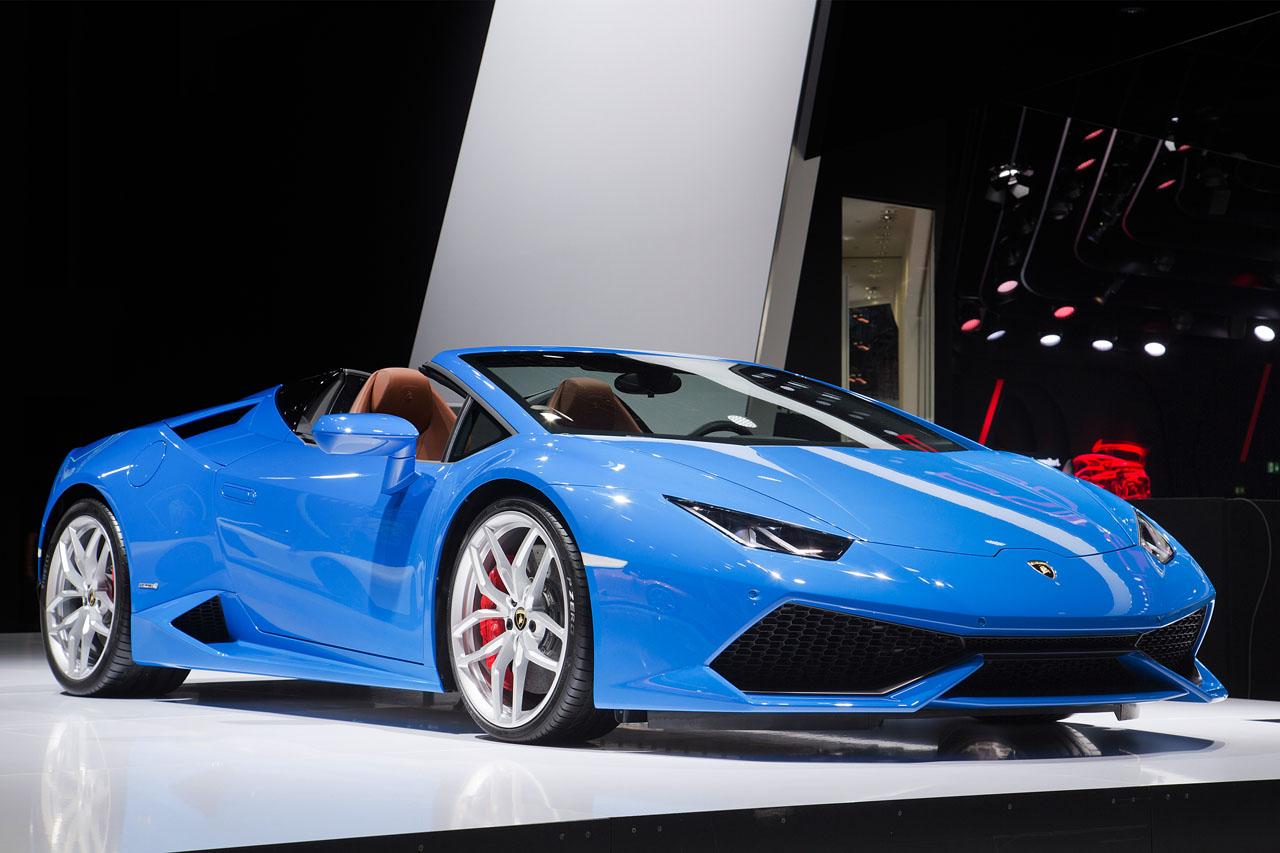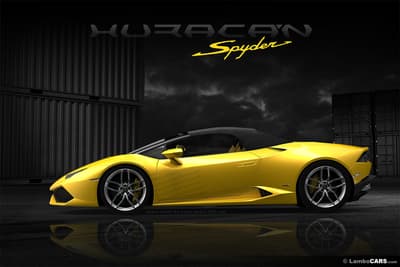At the 2014 Geneva Auto Show, Automobili Lamborghini SpA unveiled the eagerly anticipated successor to the Gallardo, the V10 Bull. With a production span of 11 years and a total of 14,022 units sold, the Gallardo marked a monumental success for Lamborghini. Replacing such an icon proved to be an immense challenge, explaining why it took the company a significant amount of time to craft the perfect follow-up.
The Lamborghini Huracán LP610-4 took over the Gallardo reign in 2014, and despite the difficult task of replacing a model that single-handedly sold almost half of the entire Lamborghini production of the last 50 years, the new model became an overwhelming success, orders poured in, and during the first 15 months of sales about 3,000 units were delivered, nearly 50% of those went to first time Lamborghini buyers a testament to the new Huracán is the perfect car for the market today.
It became evident quite swiftly that the creation of the Huracán was no casual endeavor at Sant’Agata. Just five months following the unveiling of the original Huracan LP610-4 in Geneva, Lamborghini Squadra Corse revealed the Huracan LP620-2 Super Trofeo race car. This vehicle, a genuine track beast, was developed in collaboration with Dallara Engineering, founded by Giampaolo Dallara himself. It was destined to be a contender in the 2015 season of the Blancpain Super Trofeo series across Europe, Asia, and North America.
Yet, that was merely the beginning. By January 2015, the Huracán GT3 had made its debut on the test track. This time, the Lamborghini Squadra Corse department was fully committed, crafting the race versions of their cars in-house. Giorgio Sanna, Head of Motorsport at Lamborghini, spent countless miles behind the wheel of these two specially constructed race cars, honing them for optimal performance on the track.
In a rapid 12-month timeframe, Lamborghini had already developed two derivatives of their successful new V10 model. A mere 18 months after the initial launch, the time had arrived for another step in the V10 line’s evolution. At the September 2015 IAA in Frankfurt, Lamborghini unveiled the breathtaking Huracan LP610-4 Spyder, an open version of the Coupé.
Interior & Exterior Design
Filippo Perini, Head of design, stated at the IAA that both the Huracán Coupé and the Huracan Spyder had been developed side by side, unlike the usual process of creating a convertible version after the closed model has been finalized and is selling already. This allowed Lamborghini to create two different cars at the same time while still utilizing the technical solutions developed right from the start the Huracan Spyder might look like a regular Huracan with the roof removed, but Perini states both cars are considered to be a model on their own.
During an interview with Maurizio Reggiani, Director for Research and Development, he stated the choice for the soft top on the Huracán took a lot of discussion most of the competitors to the Huracan have opted for a hard top configuration on their open models, but Lamborghini wanted to stay true to their Spyder legacy and opted to keep a fabric top on their latest model the lightweight, electrohydraulic folding soft top takes only 17 seconds to open and can be operated at speeds up to 50km/h.
The option of using a soft top also differentiates the new Huracan Spyder further from her Coupé counterpart, and according to Stephan Winkelmann, president and CEO of Automobili Lamborghini SpA, it is the perfect combination of a high-performance car with the best lifestyle ever. Even comparing the new Huracán Spyder against each other with the roof up and down, you have two different cars, the best of both worlds.
Given the fact the Gallardo Spyder was the best-selling open-top Lamborghini in history, the new Huracán Spyder will have to reach new heights in sales once again, but judging from the reactions the two show cars in Frankfurt received, this shouldn’t be too much of a problem here the decision to go for the soft top solution makes sense too the Spyder will not take away sales from her sister the Coupé something a hard top convertible might do.
We are still looking at a V10-powered Raging Bull putting 610 hp on the road with impressive acceleration figures of 0 to 100 km/h in 3.4 seconds and a top speed of 324 km/h (201 mph), while the new MY2016 engine now comes with the new ‘Cylinder on demand’ function and a ‘start and stop’ system that will cut the engine at a standstill and start her up again when you apply power when all those 610 Raging Bulls haven’t required the new Huracán can in fact deactivate an entire bank of cylinders that’s 5 of them that no longer work which does miracles for CO2 emissions.
Right from the start, the soft top on the Lamborghini Huracán LP610-4 Spyder can be ordered in three different shades, from the usual black to nice red and stylish grey fabric customers should have no trouble finding the right color roof with 11 exterior shades for the Spyder and 5 additional matte paints in the Ad Personam program.
When closed, the roof shows a very nice profile on the new Huracán Spyder with a rear window that can be lowered even with the roof up so you can enjoy the amazing sound from the V10 engine just inches behind your back, with the roof open this window can be raised again to avoid wind buffeting while driving at speed. When the roof is hidden away in her space behind the seats, there are special ducts in the side panels behind the driver and passenger to keep wind noise down.
For safety reasons, the new Lamborghini Huracán LP610-4 Spyder comes with special, pop-up safety bars that are hidden from view so they don’t spoil the perfect side profile of this new Bull, a very nice feature are the two black sections that turn into place when the roof is opened and folded away, they perfect the design of the Huracán Spyder with the roof down making sure this Lamborghini looks great no matter what the weather conditions are.
As a result of some serious aerodynamic testing, the top of the windshield on the Huracán Spyder does not need any additional deflectors in fact there is a very stylish script in place that can be customized if the owner wants to see a name there two removable lateral wind guards can be fitted to minimize wind noise at high speed inside the Spyder and direct air into the engine compartment so hot air from the V10 engine can escape better through the fins on the bespoke engine cover for the Huracán Spyder.
The chassis on the Lamborghini Huracán LP610-4 Spyder combines aluminum with carbon fiber while the body panels are made from aluminum, thanks to this hybrid chassis, the new Spyder is 40% more rigid compared to the Gallardo Spyder and with a weight of 1,542 kg this open-top version is only 120 kg heavier than her closed sibling (at 1,422 kg) resulting in a power to weight ratio of 2.53 kg per hp.
Thanks to thorough aerodynamic testing and creating a near-perfect airflow around and underneath the car (thanks to a totally smooth underbody) the Huracán Spyder exceeds the downforce of the Gallardo Spyder by 50% with the roof up these studies also ensured a very low drag coefficient and an almost complete elimination of wind noise.
Carbon-ceramic brakes are standard on the Huracán Spyder, too, while the customer can opt to have the large brake calipers painted in a few different shades while the cover 380mm discs up front and 356mm discs at the rear hiding behind large 20-inch wheels available in two models, either the standard Giano design or the optional, lightweight forged Mimas design finished in bright silver, high gloss black or titanium.
On the outside, you can opt for the ‘Style pack’ that will have the lower grills painted in glossy black, but also the fins on the engine cover, which are satin black normally, will get a high gloss finish with this option, the windshield surround is normally color coded with the rest of the Huracán Spyder, but you can order it in glossy black as an option too at the moment there is no glass engine cover available yet.
Inside the Lamborghini Huracán Spyder, you are facing a beautiful 12.3-inch TFT display with a razor-sharp resolution for instance, the rev counter is updated every 1/60 of a second to make sure it moves nicely, even under hard acceleration. Another really nice detail is the fact the electric seats received an ECU to make sure that they never touch the engine wall behind them to avoid any noises while driving.
If you think choosing the exterior color of your new Huracán Spyder was difficult, take a look at the possibilities for the interior five different levels: Standard, Elegante, Sportivo with Alcantara, Sportivo bicolor with Alcantara, and Sportivo bicolor with leather while there are no less than 17 colors for the interior.
Also, note the amazing-looking carbon fiber sport seats are available as an option on the Spyder, too; the orange metallic car at the IAA show clearly showed their magnificent style by combining black Alcantara with orange leather.
Performance
The Lamborghini Huracán LP 610-4 Spyder offers impressive performance figures, much like its coupe counterpart. Here are some key performance metrics for the Huracán LP 610-4 Spyder:
- Acceleration:
- 0-62 mph (0-100 km/h): Approximately 3.4 seconds.
- 0-124 mph (0-200 km/h): Approximately 10.2 seconds.
- Top speed: Around 201 mph (324 km/h).
- Braking: 62-0 mph (100-0 km/h) – Approximately 104 ft (31.7 meters).
- Weight distribution: 43% front / 57% rear.
Drivetrain
The Lamborghini Huracán LP 610-4 Spyder shares the same drivetrain as its coupe counterpart, the LP 610-4. It is powered by a naturally aspirated 5.2-liter V10 engine, which has a displacement of 5,204 cubic centimeters (cc). The engine delivers a maximum power output of 610 horsepower (PS) at 8,250 rpm and a peak torque of 413 pound-feet (560 Newton meters) at 6,500 rpm.
The power is sent to all four wheels (hence the “4” in LP 610-4) through a 7-speed dual-clutch transmission, also known as the Lamborghini Doppia Frizione (LDF) gearbox. The all-wheel-drive system ensures optimum traction and handling, making the Huracán LP 610-4 Spyder a high-performance convertible sports car.
Pricing and Options
The base price of the Lamborghini Huracán LP 610-4 Spyder was around $260,000 – $290,000 USD. Actual prices may vary depending on the market, taxes, and additional options.
Options and packages available for the Lamborghini Huracán LP 610-4 Spyder include, but are not limited to:
- Exterior options:
- Various paint finishes, including metallic, pearl, and matte colors.
- Carbon-fiber exterior components, such as side skirts, rear diffuser, and front splitter.
- Wheel options with different designs and finishes.
- Brake caliper color options.
- Interior options:
- Alcantara or leather upholstery in various colors.
- Contrast stitching and piping.
- Carbon-fiber interior components, including door panels, center console, and air vents.
- Floor mats with leather piping and double stitching.
- Technology and convenience options:
- Lifting system for the front axle.
- Magnetorheological suspension.
- Parking sensors and rearview camera.
- Navigation system.
- Upgraded audio systems, such as the Sensonum sound system.
- Customization options through the Ad Personam program: Lamborghini’s Ad Personam program allows customers to personalize their vehicles with unique color combinations, materials, and finishes.
I’m sure the new Lamborghini Huracán LP610-4 Spyder will become an instant sales success once again, and as Stephan Winkelmann mentioned at the press conference in Frankfurt, this is only the second model in the Huracán line up, and there is much more to come.




